Whenever there is talk about serger stitches there is a mention of flatlock stitch and cover stitch. I used to confuse the two all the time. They both look neat, have stretch, and are great for knits. But they serve very different purposes once you get into the details.
But there are differences between flatlock vs coverstitch for intense,
Cover Stitch Vs Flatlock
Flatlock creates a decorative, open seam ideal for layering, while coverstitch forms a strong, stretchy hem perfect for finishing knit garments.
I’ll also show you real examples from my own sewing projects and let you in on which one I personally reach for more (and why!) like flatlock vs overlock.

Table of Contents
Is Flatlock The Same As Coverstitch?
Nope, flatlock and coverstitch are not the same. Although they are often confused because they’re both used with stretch fabrics and sergers. But the reality is,
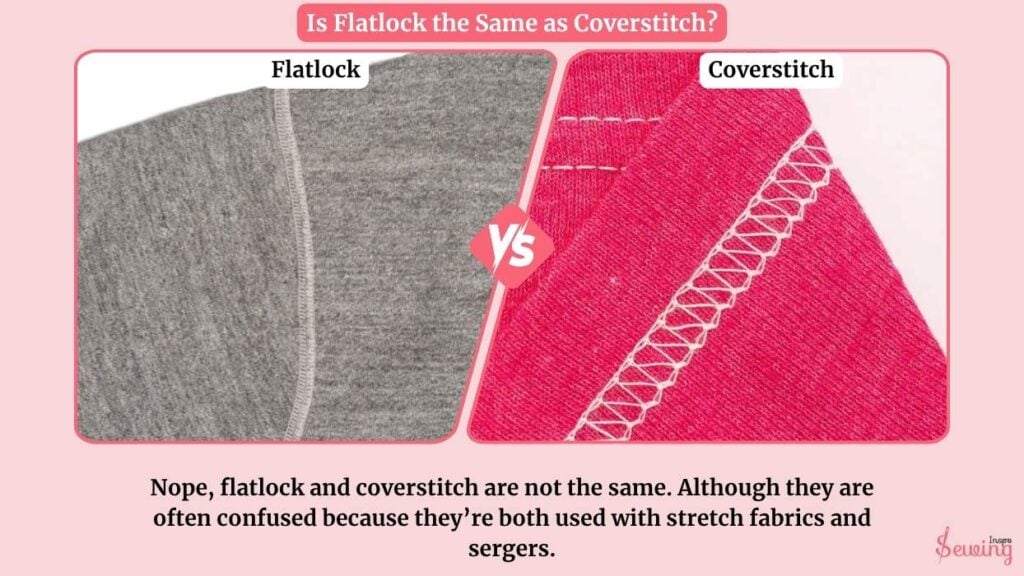
Flatlock joins two pieces of fabric edge-to-edge and lies completely flat. It creates a decorative seam you can wear inside-out or right-side-out. That’s why it’s one of the best stitches among serger stitches.
Coverstitch Finishes hems and seams while still allowing the fabric to stretch. You often see this on T-shirt hems 2 lines of straight stitches on top, loops underneath.
Different looks, different functions!
Flatlock Vs Coverstitch Key Difference
Flatlock stitch is mainly used for decorative seams that lie flat, while coverstitch is used for hemming stretchy garments with a clean, professional finish.
But rather than that they also differ in,
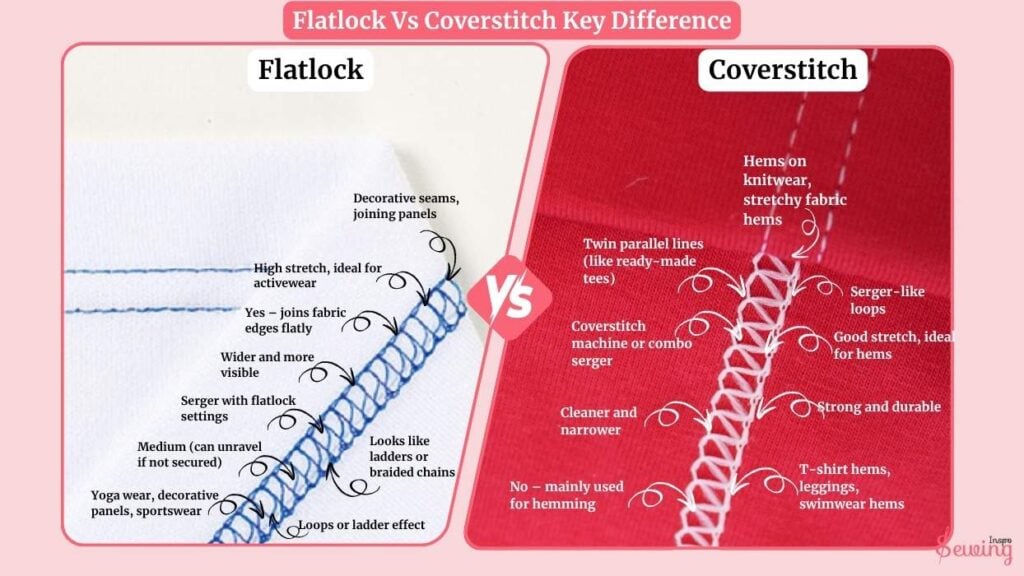
| Flatlock Stitch | Coverstitch |
| Decorative seams, joining panels | Hems on knitwear, stretchy fabric hems |
| Looks like ladders or braided chains | Twin parallel lines (like ready-made tees) |
| Loops or ladder effect | Serger-like loops |
| High stretch, ideal for activewear | Good stretch, ideal for hems |
| Yes – joins fabric edges flatly | No – mainly used for hemming |
| Wider and more visible | Cleaner and narrower |
| Serger with flatlock settings | Coverstitch machine or combo serger |
| Medium (can unravel if not secured) | Strong and durable |
| Yoga wear, decorative panels, sportswear | T-shirt hems, leggings, swimwear hems |
Which Is Stronger Among Flatlock Vs Coverstitch?
After experimenting with both stitches on a bunch of knit projects like leggings, t-shirts, and workout tops. I’ve noticed something,
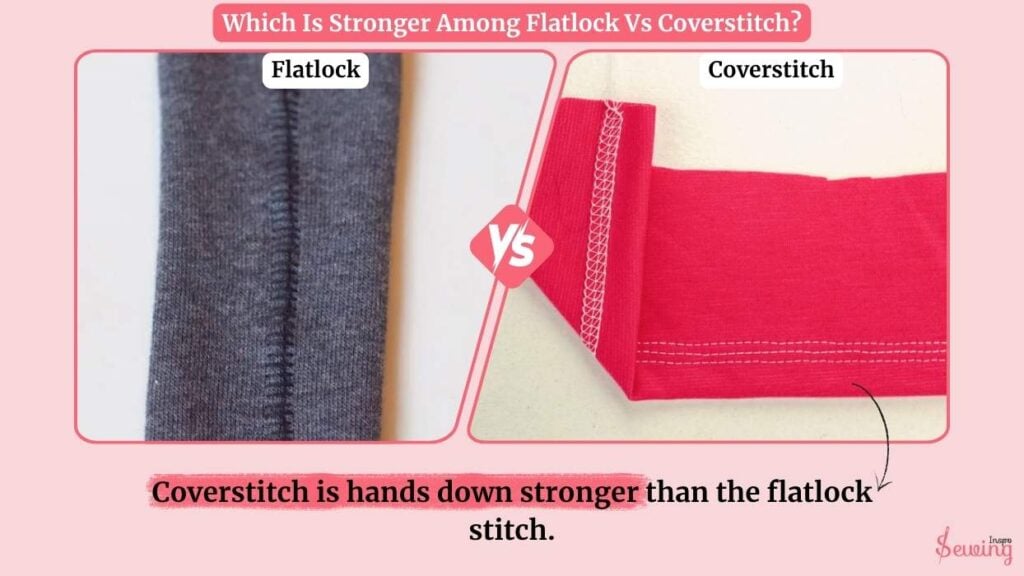
Coverstitch is hands down stronger than the flatlock stitch.
When I really put stress on the fabric, like pulling at a hem or stretching a neckline, the coverstitch held up better over time. It gives a cleaner, more secure finish that doesn’t unravel easily like overlock.
So while I love flatlock for design and flexibility, coverstitch is my favourite when I want durability with stretch.
When To Use A Flatlock Stitch?
Flatlock is ideal for seams that require exceptional comfort and stretch. It lies flat against your skin. So, it’s awesome for things like leggings, activewear, or baby clothes, where you don’t want any bulky seams poking you.
Plus, it looks neat on both sides, so if you flip your garment inside out, it still looks great. And if you want to add a little style with visible stitching, flatlock’s ladder-like look is a cool bonus.
Basically, if I am stitching with stretchy fabrics or want a seam that’s both functional and flattering, flatlock is the stitch I want.
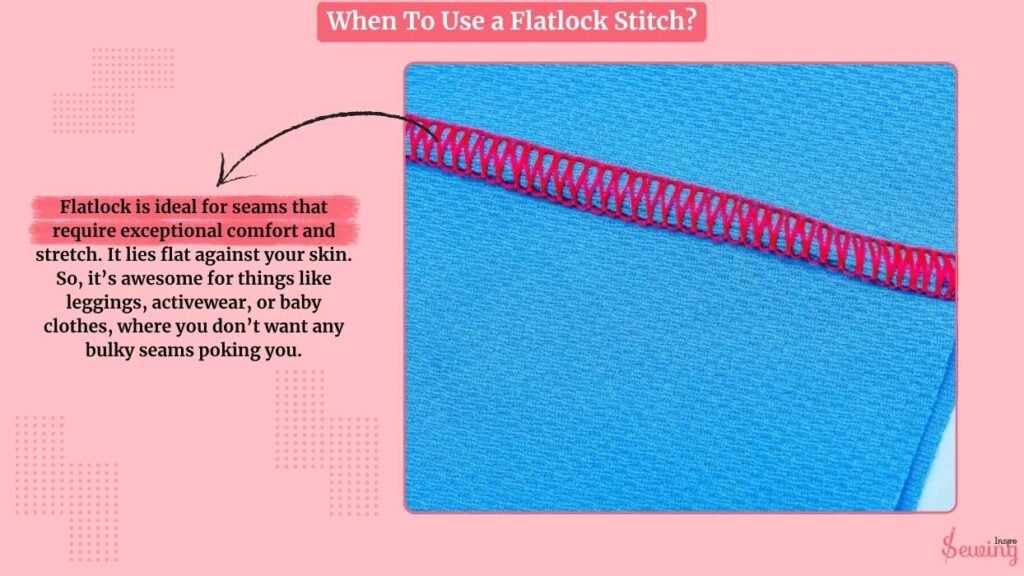
Coverstitch Vs Overlock Stitch
I have some questions about the difference between Coverstitch and Overlock Stitch. So I decided to answer it while. Basically, the main difference between both stitches are
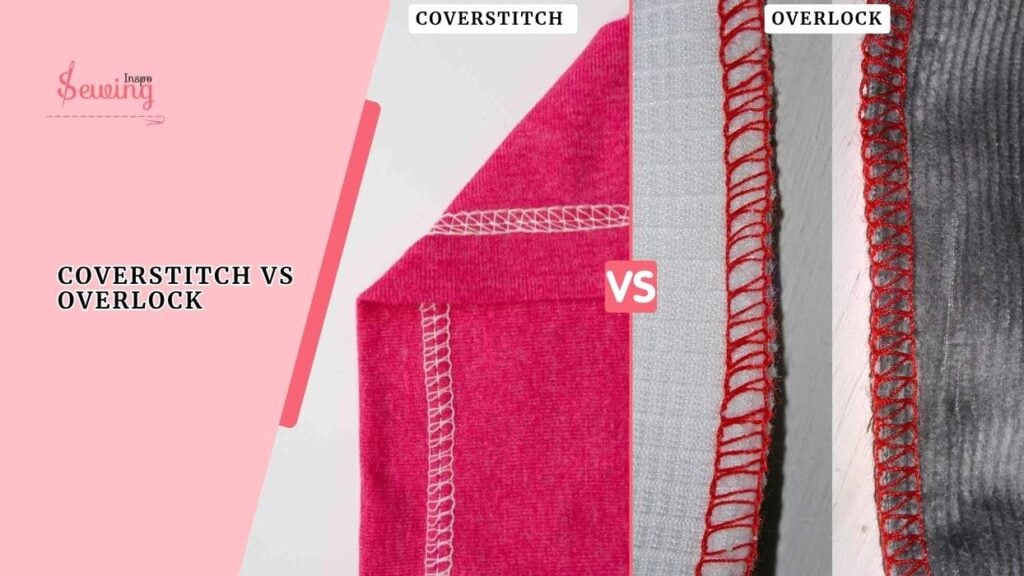
| Coverstitch | Overlock |
| Flat, polished hem with visible topstitch | Looped edge, hidden inside seams |
| Best for hemming and topstitching | Ideal for joining, trimming, and finishing |
| Soft, flat, skin-friendly | Slight ridge, can be felt on the skin |
| Flexible but not strong | Strong and durable for seam allowances construction |
Frequently asked questions
Do I need a serger for flatlock and coverstitch?
You can do flatlock with a regular serger. But coverstitch usually requires a dedicated coverstitch machine or a combo machine that offers both.
Can flatlock be used decoratively?
Absolutely! I’ve used flatlock as a visible design element. Especially when done with a contrasting thread. It’s great for giving a garment that store-bought athleticwear look.
Which one’s easier to set up?
Flatlock can be fiddly at first—adjusting tension takes trial and error. Coverstitch is easier once you get the hang of threading and balancing tensions (especially the looper).
Final Thought
After testing flatlock vs coverstitch on various projects. I consistently find myself reaching for the coverstitch when I want a clean, strong, and ready-to-wear finish. Flatlock’s fun and decorative. But coverstitch just wins for everyday reliability. It’s become my go-to, hands down.


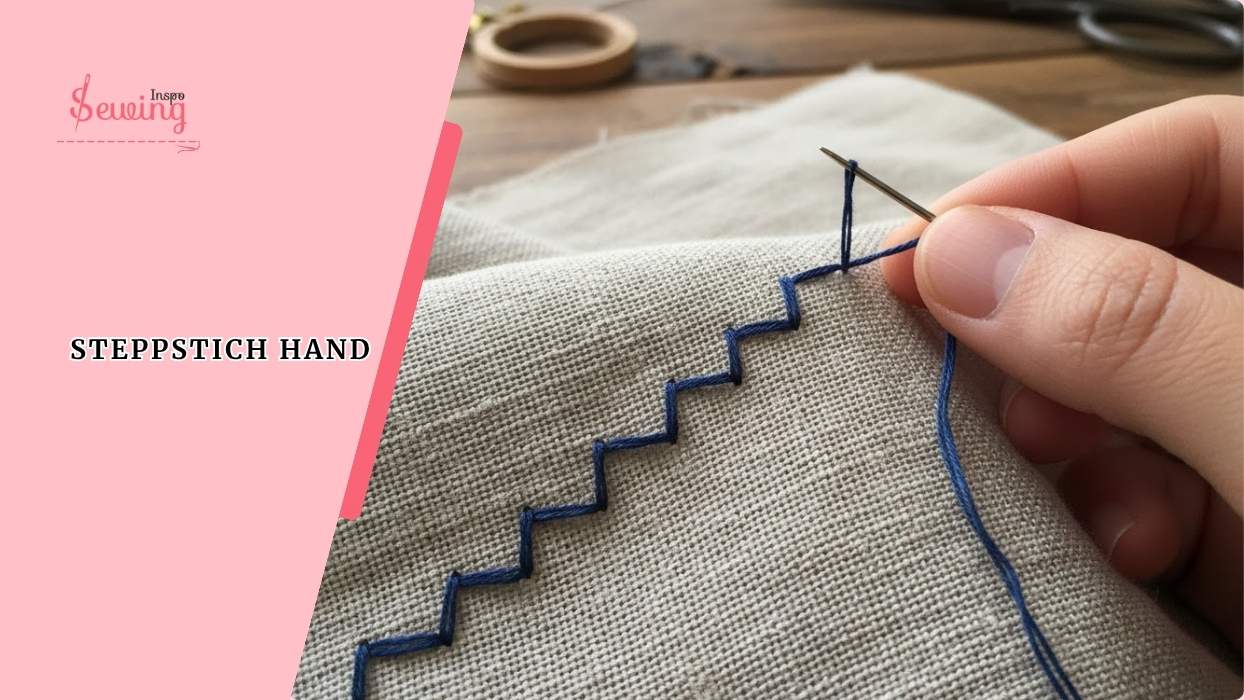
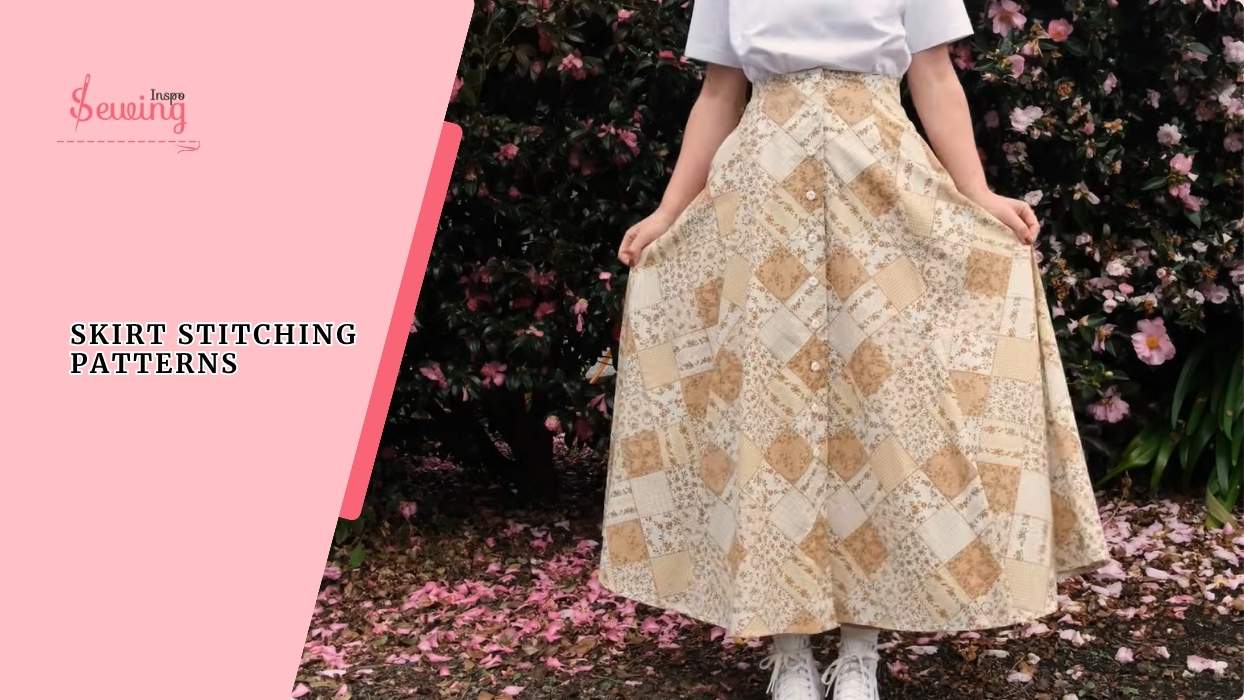

Leave a Reply